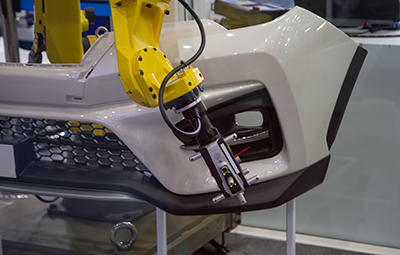Is Robotic Laser Metrology the Right Inspection Process for You?

Robotic laser metrology is a game-changing technology that's transforming how manufacturers conduct quality inspections. By combining a six-axis robotic arm with advanced laser radar systems, this technology delivers unmatched precision, speed, and efficiency in part inspection. It's no longer just a futuristic concept — it's a practical solution being adopted across multiple industries today.
Industries such as automotive, aerospace, defense, and even high-precision engineering have started to integrate robotic laser metrology into their workflows. These sectors rely heavily on accuracy and consistency, making automated inspection systems an essential tool. The benefits go beyond just speed; they include reduced human error, increased throughput, and more reliable data collection.
Laser Metrology Tackles Common Inspection Challenges
Introducing a robotic system equipped with a laser metrology head can significantly improve your inspection process. It helps eliminate bottlenecks, reduce manual labor, and boost overall productivity. Many manufacturing facilities report dramatic improvements in quality control once they implement this type of automation.
If you're considering automation, it's best to start small. Large-scale investments should be made only after thorough testing. Begin by automating one task at a time — this allows your team to adapt gradually and ensures a smoother transition to full automation.
Common signs of bottlenecks in inspection processes include slower production rates, work-in-progress accumulation, sudden capacity constraints, and long waiting times. Identifying these issues early can help you determine where automation will make the most impact.
How Do You Know If You Need a Laser Metrology Robot?
Are you wondering if robotic laser metrology could benefit your facility? Here are five key steps to help you evaluate whether your inspection process is ready for automation:
- Break down your inspection process. Start by analyzing each step involved in your current inspection routine. Some tasks are straightforward to automate, while others may require further consideration.
- Define the data you collect. Your inspection likely involves various types of data. Determine which data points are critical and whether robots can efficiently capture them.
- List the tools and equipment used. Not all devices are compatible with robotics. Identify which tools can be integrated with a robotic system and which ones may need manual handling.
- Assess the tasks for automation suitability. Robots excel at specific tasks, such as positioning sensors or loading parts into testing machines. Not every task is ideal for automation, so focus on the most repetitive or error-prone steps.
- Select the right task to automate first. After going through the previous steps, you'll have a list of potential automation candidates. Choose the one that offers the highest return on investment and test it before scaling up.
Whether you're looking to increase efficiency or improve product quality, robotic laser metrology can offer real value. If you're interested in exploring this technology, reach out to experts who can guide you through the implementation process. Find out how Genesis Systems can enhance your inspection workflow with a tailored laser metrology solution.
Posted in UncategorizedPlastic Mould Steel,Plastic Mold Steel
Jiangyou ChongxinSpecial Metal Materials Co., Ltd. , https://www.zhongxindiesteel.com